Winter trail running gear: kit for adventurous snowy runs
A guide to the essential kit for staying safe, warm and dry on the trails
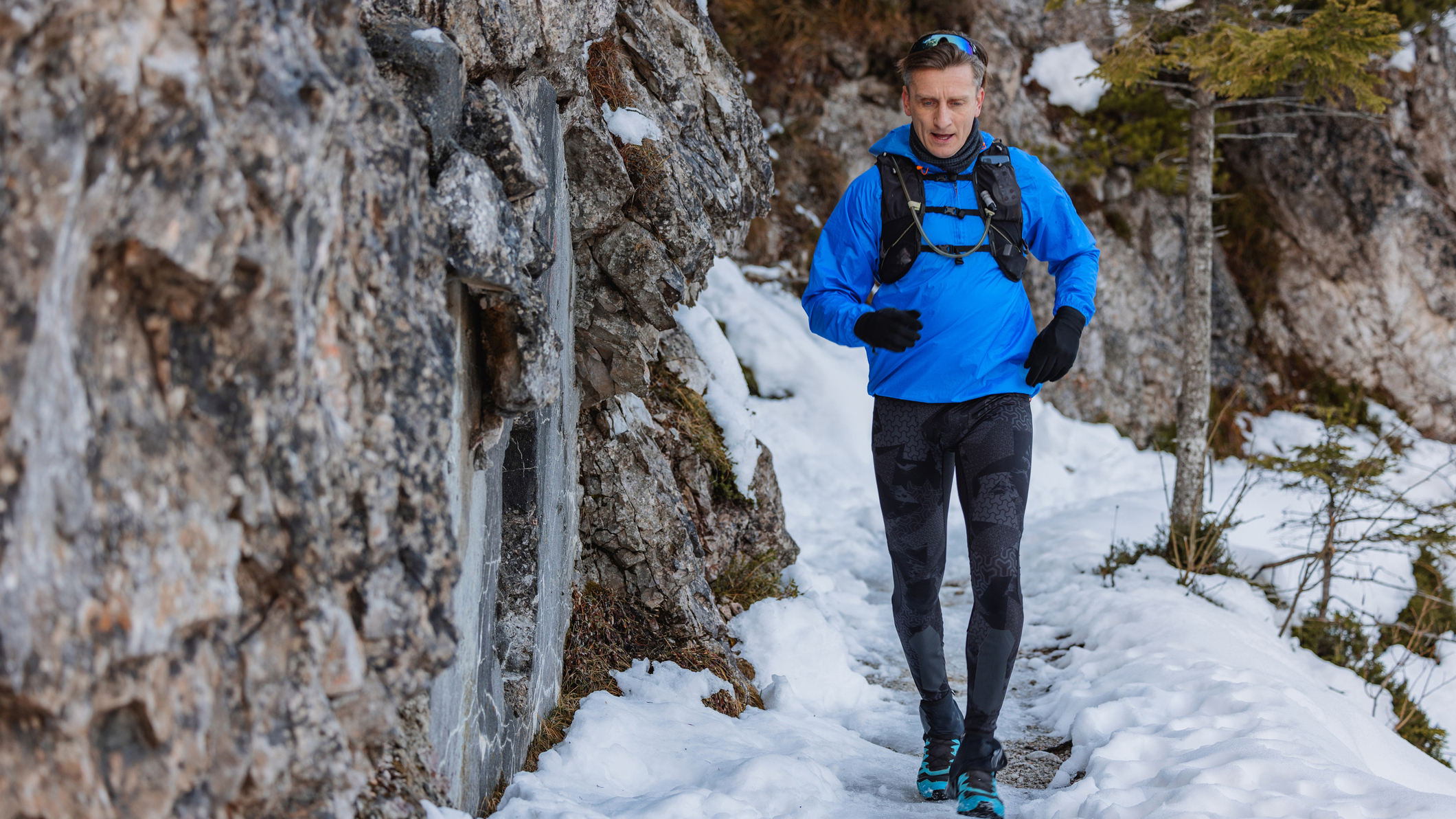
When the temperature falls and winter brings rain, snow, sleet and wind, you will need to reassess what you wear for the trails. Of course, not every day will be a battle with icy elements, but the chances are you will need a decent range of winter running gear if you are going to keep hitting the hills until daffodils start to emerge and the dawn chorus starts to dominate the early mornings.
The basics for running in winter are the same as for adventurous warmer weather running but with some extra essentials, as well as warm gear for staying toasty and dry.
If you're not taking to the trails and hills this winter but hitting the tarmac instead, Advnture editor and qualified Run Leader Cat Ellis has provided the ultimate winter running gear checklist. However, if wild trails are your bag, read on...
Meet the expert
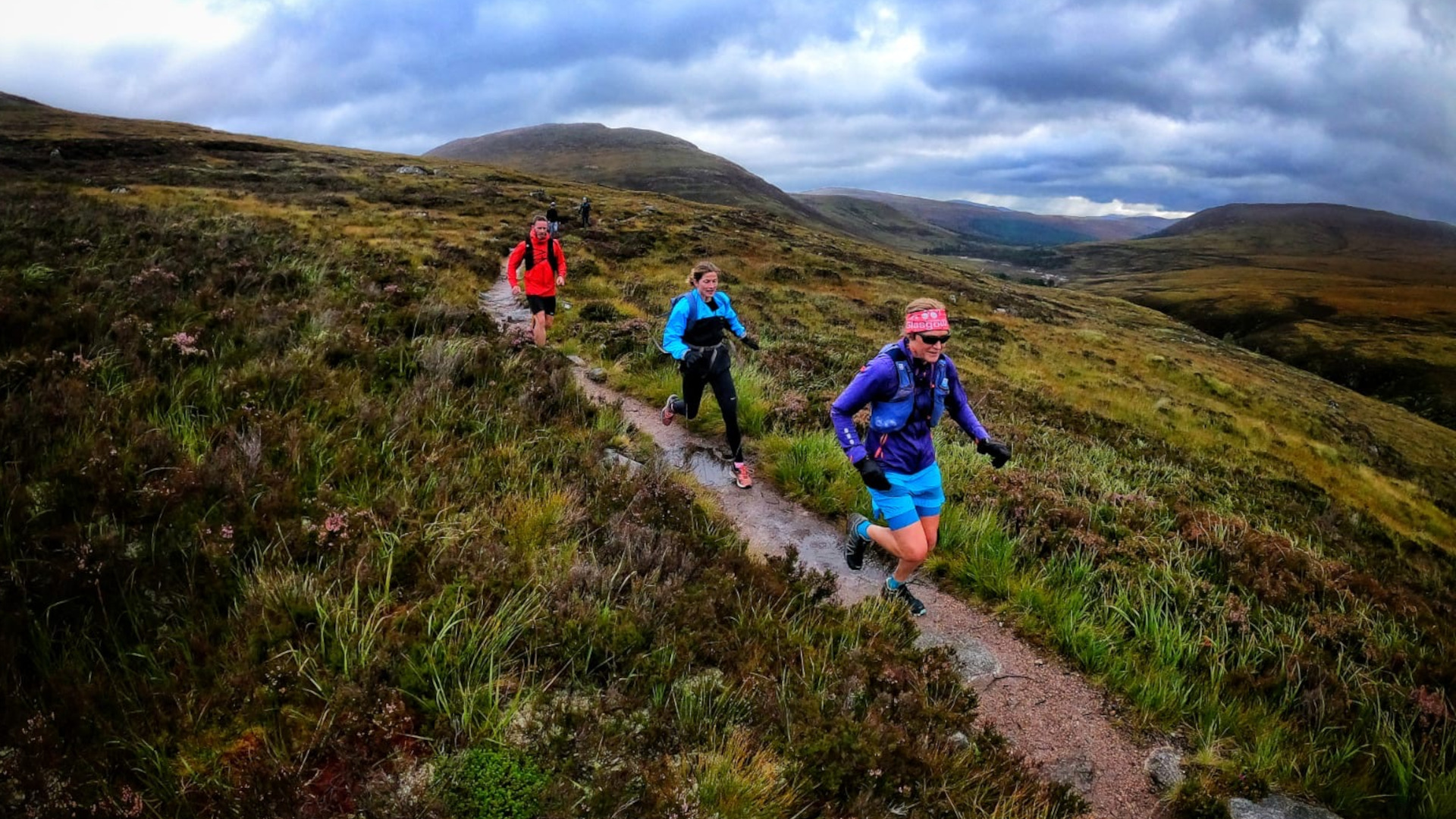
Avid runner Fiona calls the hills and mountains of Scotland, which can be particularly brutal in winter, home. She loves nothing more than setting out onto the trail, preferably with her dog in tow. Here, Fiona details some of the essential winter trail running kit.
Today's best deals
Trail running shoes
- Trail shoes with grippy lugs are best for winter terrain
- Some prefer waterproof trail shoes for winter, though they're less breathable
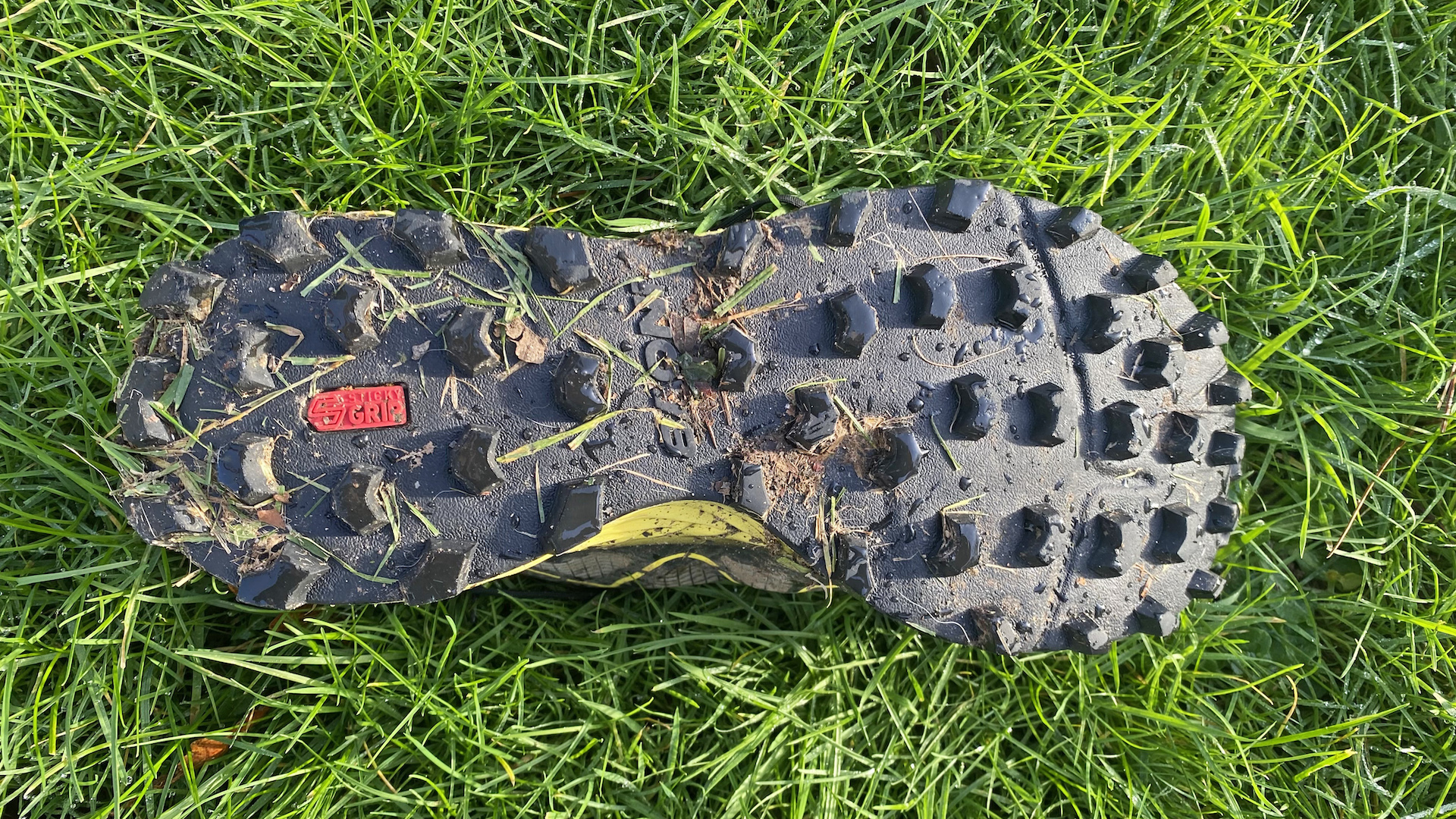
In winter, more than any other time of the year, you need to make sure you have the right trail running shoes. It is likely to be wet, muddy and perhaps icy and snowy when you go for a run. Look for trail running shoes that are best in the mud. The soles should have a grippy design, with long lugs of around 5mm to effectively claw into muddy ground.
Many people like to have waterproof trail running shoes for winter, which means you need to look for liners, such as Gore-Tex, designed into the footwear. However, one drawback of waterproof shoes is that they're not as breathable. As well as this, hit a particularly impressive puddle or deep snow and water can still get in over the top, which brings us nicely to...
Running gaiters
- Running gaiters can be attached to keep out the wet
- Some winter trail running shoes feature integrated gaiters
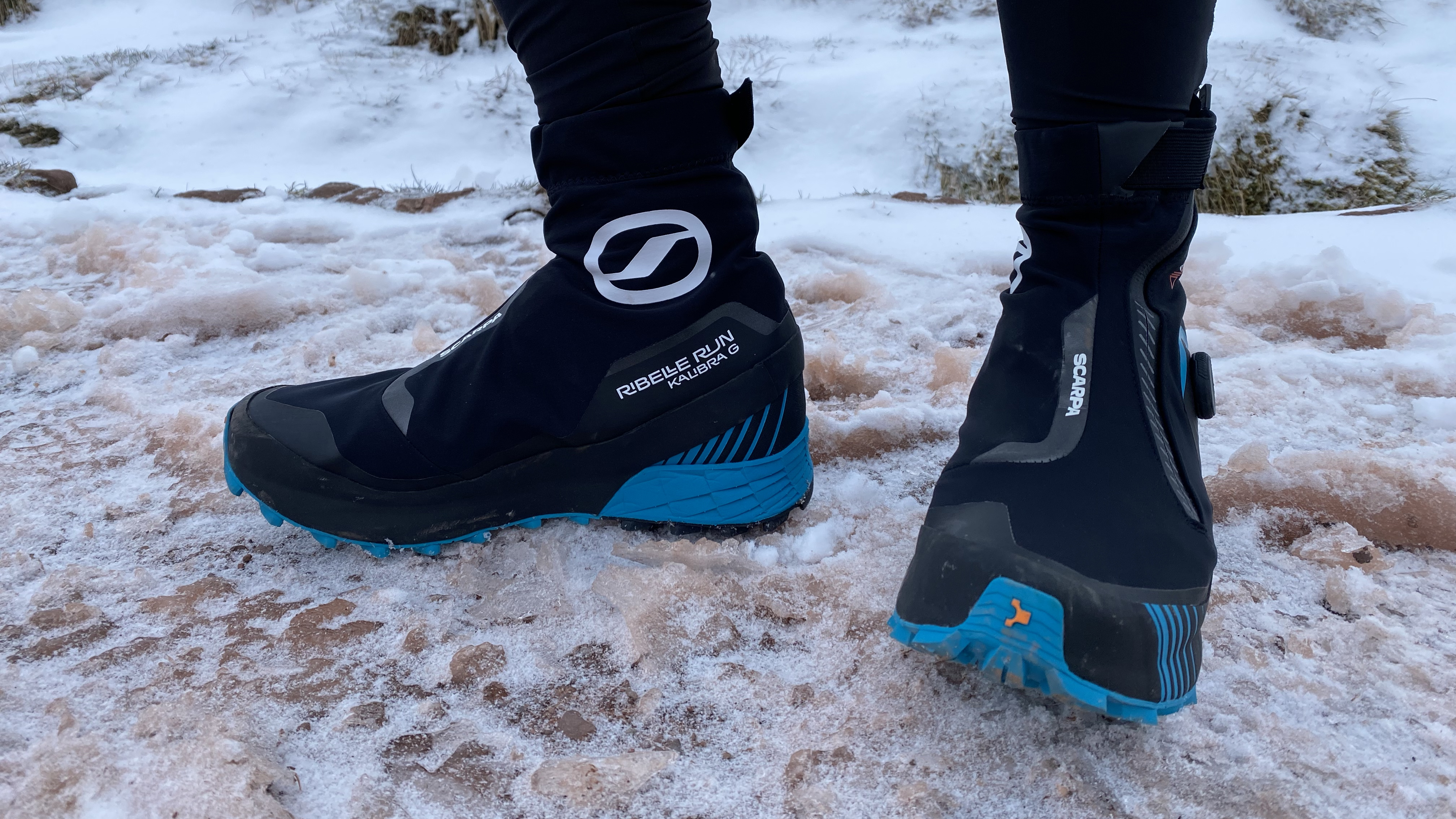
Many runners choose to wear running gaiters in the winter. The aim of gaiters is to keep out trail debris and also to provide some resistance to wet, snow and ice so that your feet and socks remain drier.
These days, some winter trail running shoes, such as Scarpa's Ribelle Run Kalibra G and La Sportiva's Cyklon Cross GTX feature integrated gaiters. These are great options for snowy runs.
All the latest inspiration, tips and guides to help you plan your next Advnture!
Trail shoe spikes
- On fresh snow, your trail shoes may be enough but on compacted snow or ice you'll need more grip
- Traction devices like microspikes or Yaktrax are suited to running
Spikes or grips can be attached to trail running shoes to provide an aid to traction if you plan to run on hard and icy ground. Initially, you may find that your usual trail shoes, with decent studs, will be enough for fresh snow but then if it becomes compacted and icy, you’ll be better off attaching some form of traction device.
Coiled traction devices, such as Yaktrax, are well suited to running, while microspikes also work very well, though aren't as suitable for road running.
Running tights
- Bare skin is vulnerable in winter, so tights are highly recommended
- Winter running tights are often fleece lined
Bare skin will be vulnerable to the cold, windchill and snow, which means a pair of running tights will be part of the essential winter running gear list for most people. Choose running tights that are a neat fit, so they don’t fall down, but also that offer good protection for the full length of your legs. There is nothing worse than cold, wet or chilled ankles because the tights are too short. If you suffer in the cold, buy winter running tights that are fleece lined or have brushed cotton on the inside.
Layers
- Several thin layers are better than one thicker layer

It's worth putting a few thin layers into your hydration pack or running backpack, just in case you have to stop for an extended period. Several thinner layers will provide more warmth a versatility compared to one thicker layer. Thinner layers trap warm air between skin and fabric and also between two different tops. When you feel too warm or too cold you can remove or add a layer as required.
Waterproof socks
- Some like thick trail running socks that provide plenty of warmth
- Others prefer lightweight, waterproof socks for wet weather
Most runners wear thicker trail running socks, or socks made from natural fibres, such as Merino, in winter to keep feet warm. However, you could also try a pair of lightweight waterproof socks if you know it is going to be particularly wet or muddy where you will be running.
Some people say that waterproof running socks make their feet sweat too much, while others swear by them for wet winter running.
Running jacket
- A winter running jacket will keep the rain and wind at bay

A winter running jacket should be able to keep out the rain and wind, while also offering good levels of breathability. Despite winter cold, you will still sweat when running and it’s important that the vapour can evaporate. If the sweat stays inside the jacket, you will end up damp and then cold.
A winter running jacket is likely to be a bit heavier than a summer option simply because it needs to protect you from stronger winds and heavier rain.
Waterproof trousers
- Rain pants are lightweight and designed to be put on quickly in a deluge
The chances are you will end up caught in heavy rain or snow, or you might set out to run in difficult weather, so a pair of waterproof over-trousers, or rain pants, are a good idea. Look for lightweight and breathable pairs that pack down small enough to go in your pack.
Headwear
- As you lose heat from your head, quality winter headwear is recommended
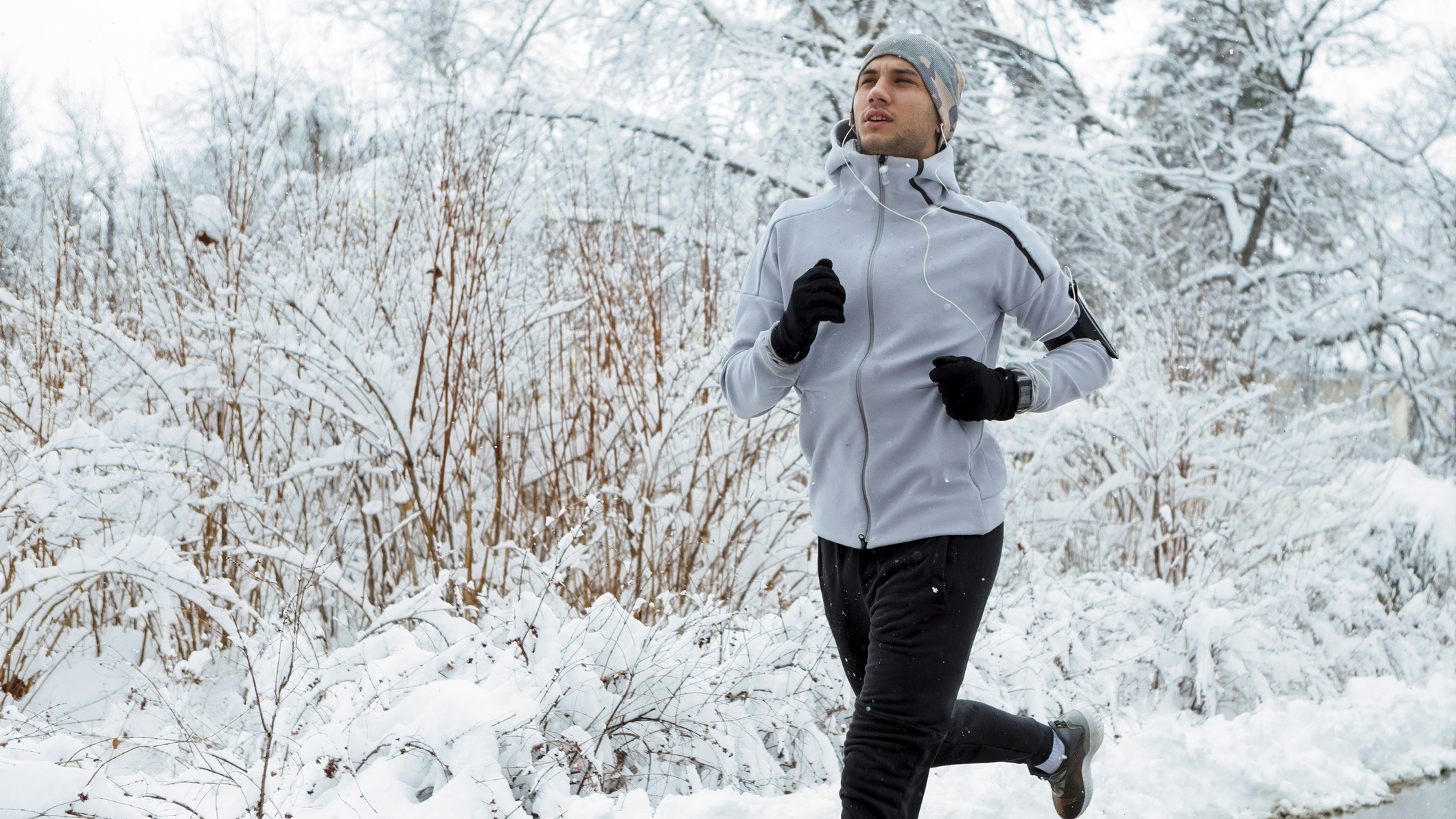
You’ll already know that you lose heat from your head, so good quality winter headwear is a must. The best running headwear, whether it’s a hat, beanie or buff, covers your ears, too. It’s a horrible fact of winter that cold wind, sleet or rain will make uncovered ears painful.
Running gloves
- Lightweight gloves are great for winter running
- It's worth taking a spare pair in your pack

Hands suffer in the cold in winter, which means you may need to wear running gloves. Choose mittens if you suffer with very cold hands and make sure you have a range of gloves to suit different temperatures. You can always stash spare pairs in your pack.
If you'll be running longer distances or at higher levels in winter, it’s a good idea to take a thicker pair of gloves with you, in case your hands become colder.
Extra layers
- Taking additional clothing in winter allows you to adapt to different situations that arise
Going out in winter can throw up some unpredictable situations. You may be halfway through a run and it starts to rain or snow. Or you might start cold and then need to take off a layer because she feel warmer.
It’s important to extra take kit with you for warm and safety reasons. For example, an extra long-sleeved base layer and a lightweight insulated or puffer jacket make good sense.
Running pack
- A hydration pack allows you to carry food, water and some essentials
- A larger runner's pack gives more capacity for additional clothing and the like
- The latter is preferable for long, adventurous runs

There's a choice here between a lighter hydration pack or a larger runner's backpack. Of course, the trade-off is capacity. Whereas a backpack will let you carry more clothing, food, drink and emergency items, it'll also weigh you down more on the trail. The option you go for will depend on the nature of your run. If you're just out for a couple of hours, a hydration pack should suffice but on a longer adventurous run in the mountains, you'd need a larger pack.
Headlamp
- A headlamp allows you to run pre dawn or after sunset
The chances are you will need to run in the dark at some point in the winter. Most people slot in a run before or after work hours and this means a dark morning or evening run. A headlamp is essential so that you can properly see where you are going and so that other people will see you coming. It also provides a safety net for if you get caught out after dark.
Food and water
- Insulating your drinks is key in freezing conditions
- Gels can freeze too, so hold them in your palms as you run
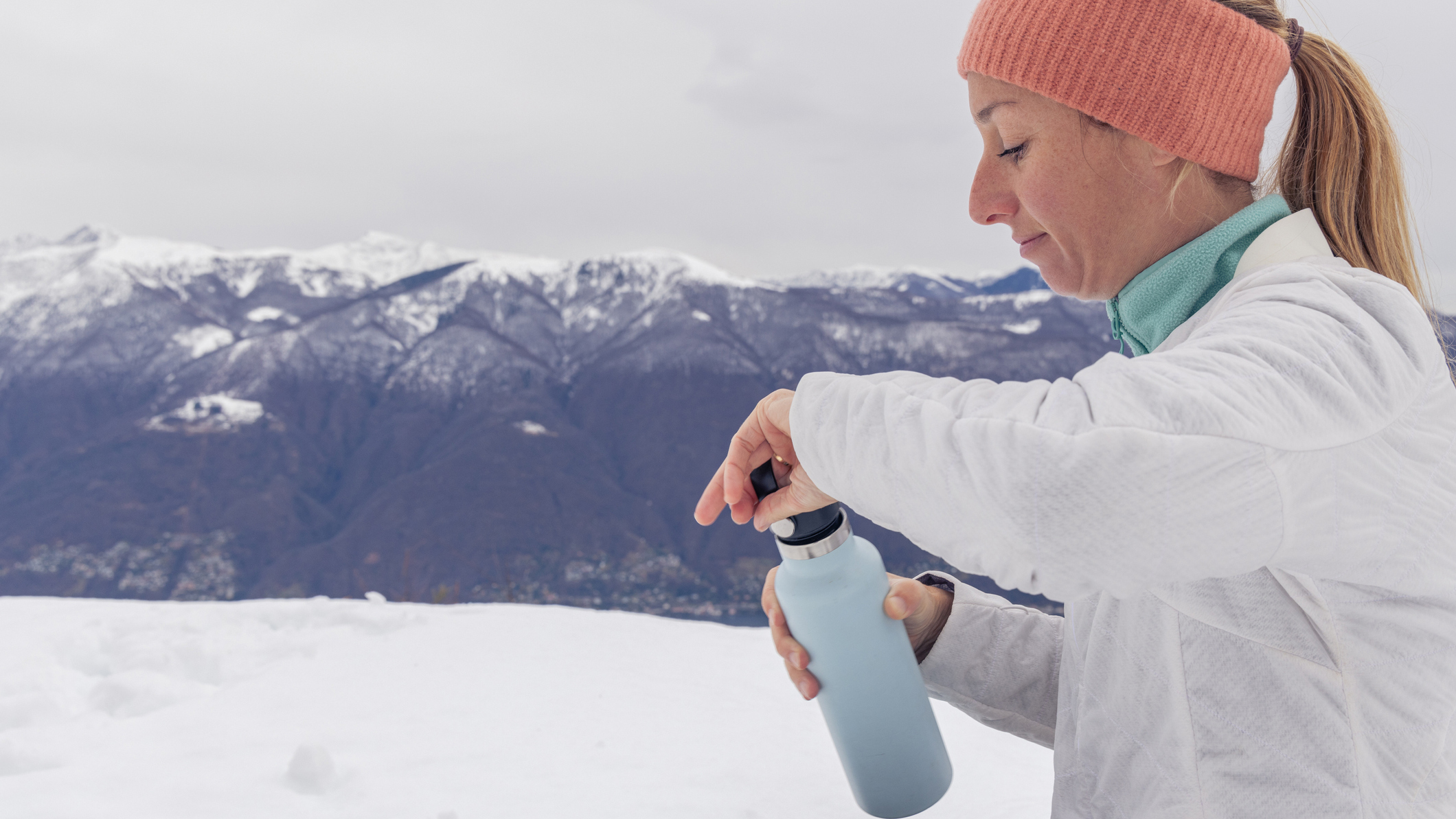
Running food and water are important all year round. Winter is no different so make sure you have enough with you for the length of the run. It's a good idea to use an insulated bottle or sleeve for a hydration bladder to prevent the water freezing in low temperatures. Another good tip is to start with warm water, so it'll take longer for it to freeze.
A flask of hot drink is also recommended if you are going to be trail running in the hills for a half or full day.
If you usually take energy gels, hold them in your palms to stop them from freezing up too. Nothing is quite as demoralizing as standing before a big, snowy incline, reaching for your precious energy gel and finding it's totally frozen.
Safety kit
- An emergency shelter, whistle, headlamp and first aid kit are all essential in winter
In winter, if you are running on trails there is a greater likelihood of an accident. You might slip on ice, or wet tree roots, or perhaps trip over a broken tree branch or wind-blown debris.
It’s even more important tho make sure you have the right safety kit with you, including a bivy sack or emergency shelter, a whistle (to sound for help), a small first aid kit, and a mobile phone and headlamp.
Running poles
- Poles will save you energy and give you extra stability
- Make sure your snow baskets are attached to the base of your poles
As we have said already, there are greater dangers and hazards on the winter trails, which means that it could be useful to use running poles, as they'll save energy and provide stability. Choose lightweight poles for running for ease of use.
If you will be running on snow, it’s a good idea to add snow baskets to the base of the poles to make sure they stay closer to the surface of the snow rather than dropping deep into the snow.
Navigation aids
- Having a means to navigate is essential on an adventurous winter run
- Smartphone navigation apps are very useful
- For a paper map, print off the section you need and store it in a plastic wallet
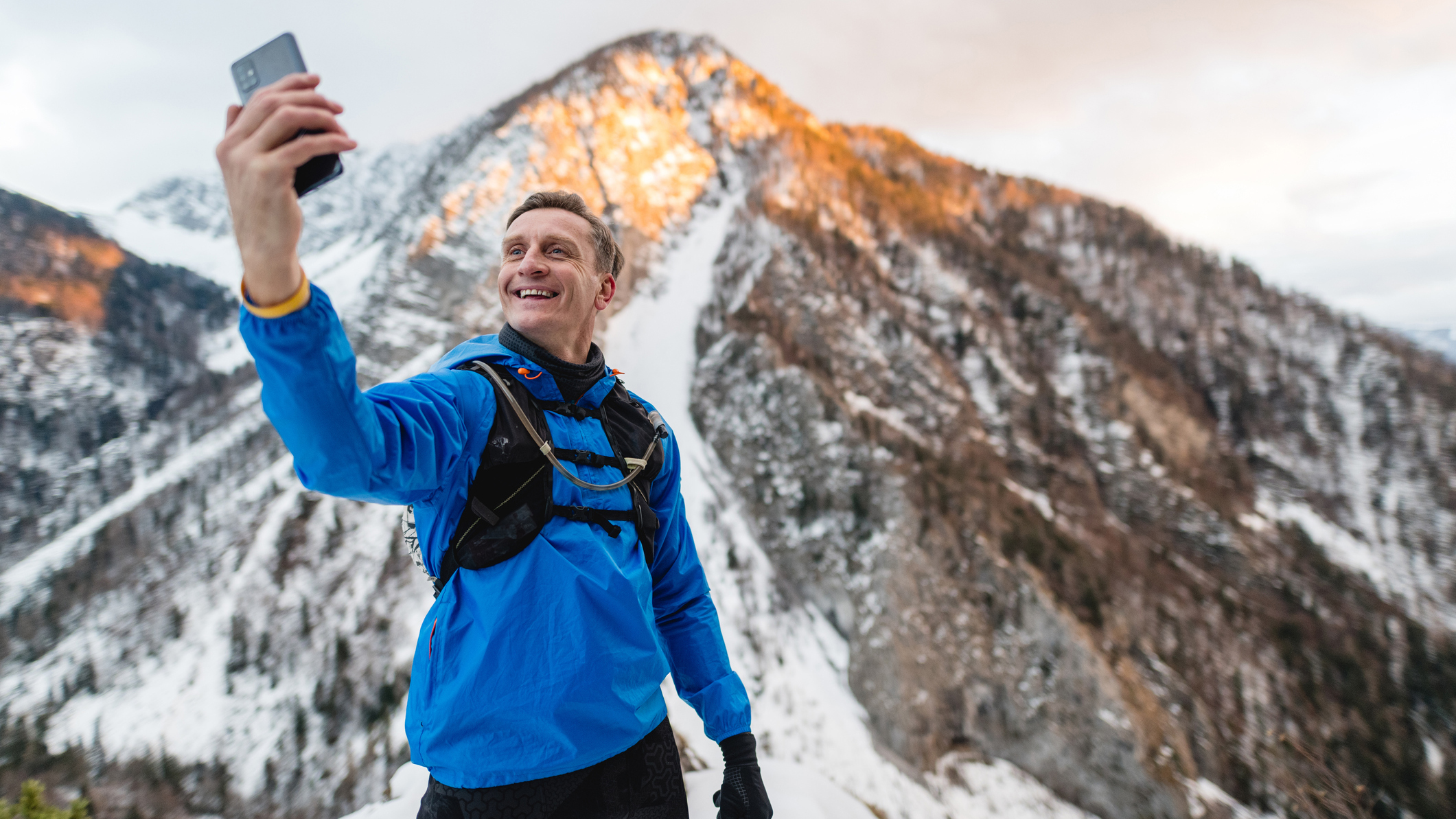
Winter often brings poorer visibility, whether it’s darkness, low cloud, fog, rain or a snowy whiteout. Unless you are sticking to familiar local trails, it’s important you have a means of navigation. A map and compass are vital, and also one of the best navigation apps for your phone. Just be aware that the cold saps battery quicker than in summer, so keep your phone close to your heat reserves.
A good tip is to print off the section of a map you know you'll need and place it in a see-through plastic wallet, that way, you've got it quickly to hand and it won't flap around like a fully unfurled topo map.
Alternatively, fold your larger map down to just the square you'll require and put it in your map case.
Communication
- A GPS unit or, at least, a phone should be carried on winter trail runs
It's important to have a form of communication with you on winter trail runs. A mobile phone is a good idea, but if you do not have a signal it could be that you will need a GPS beacon. You should know what to do if you need to call for help on the trails.

Fiona Russell is a widely published adventure journalist and blogger, better known as Fiona Outdoors. She is based in Scotland and is an all-round outdoors enthusiast with favorite activities including trail running, mountain walking, mountain biking, road cycling, triathlon and skiing (both downhill and backcountry). Aside from her own adventures, Fiona's biggest aim is to inspire others to enjoy getting outside and exploring, especially through her writing. She is also rarely seen without a running skort! Find out more at Fiona Outdoors.
